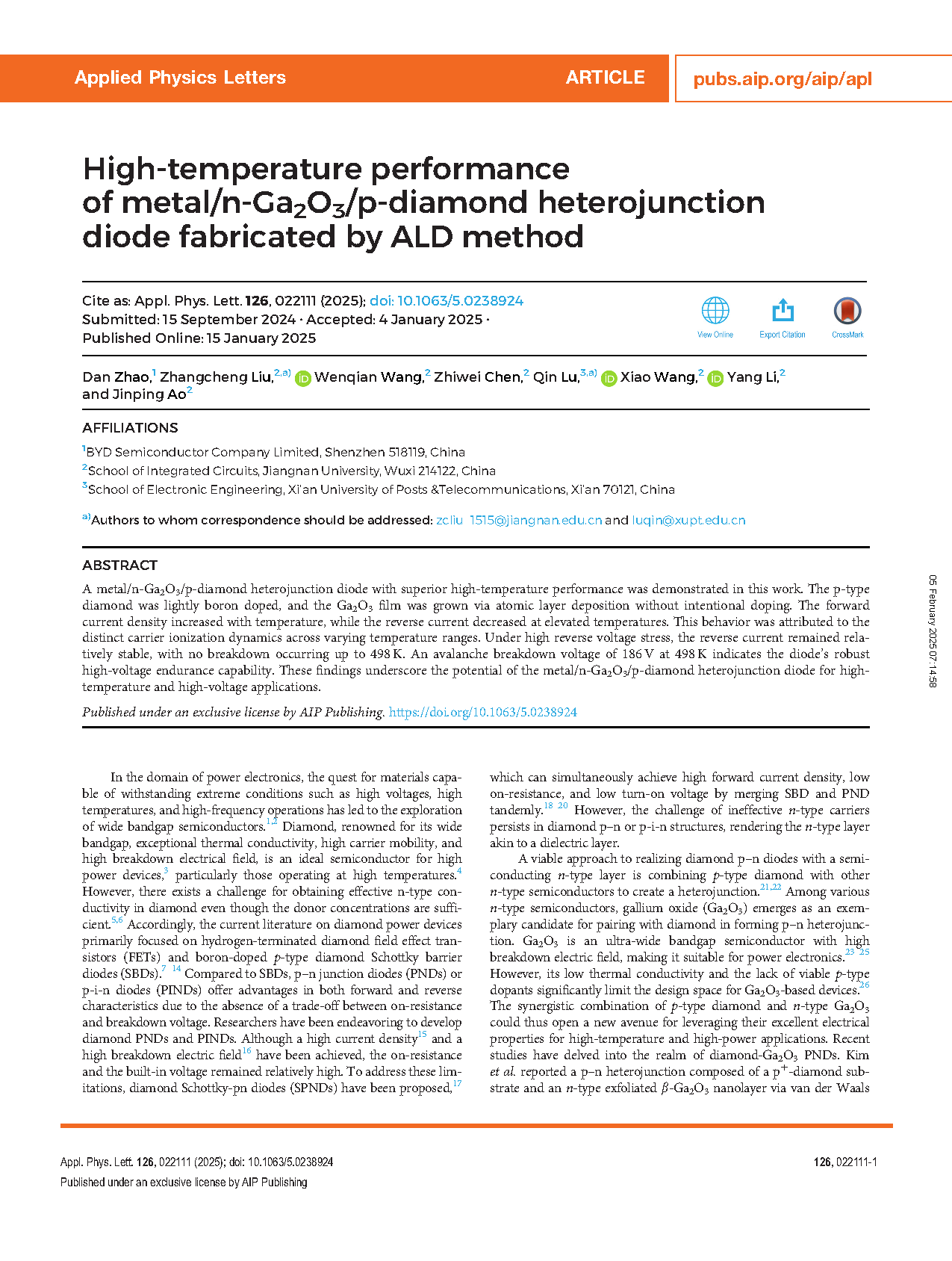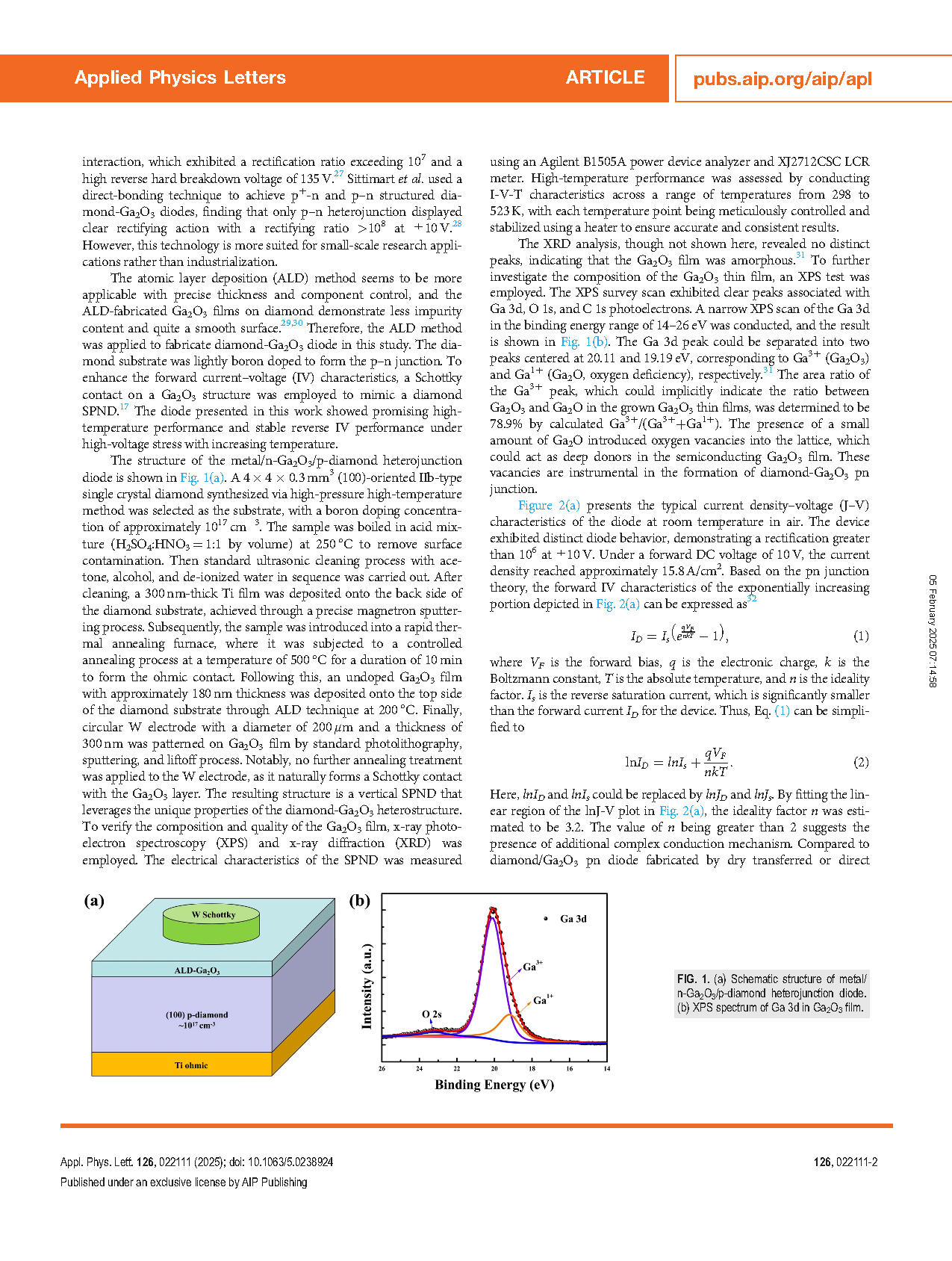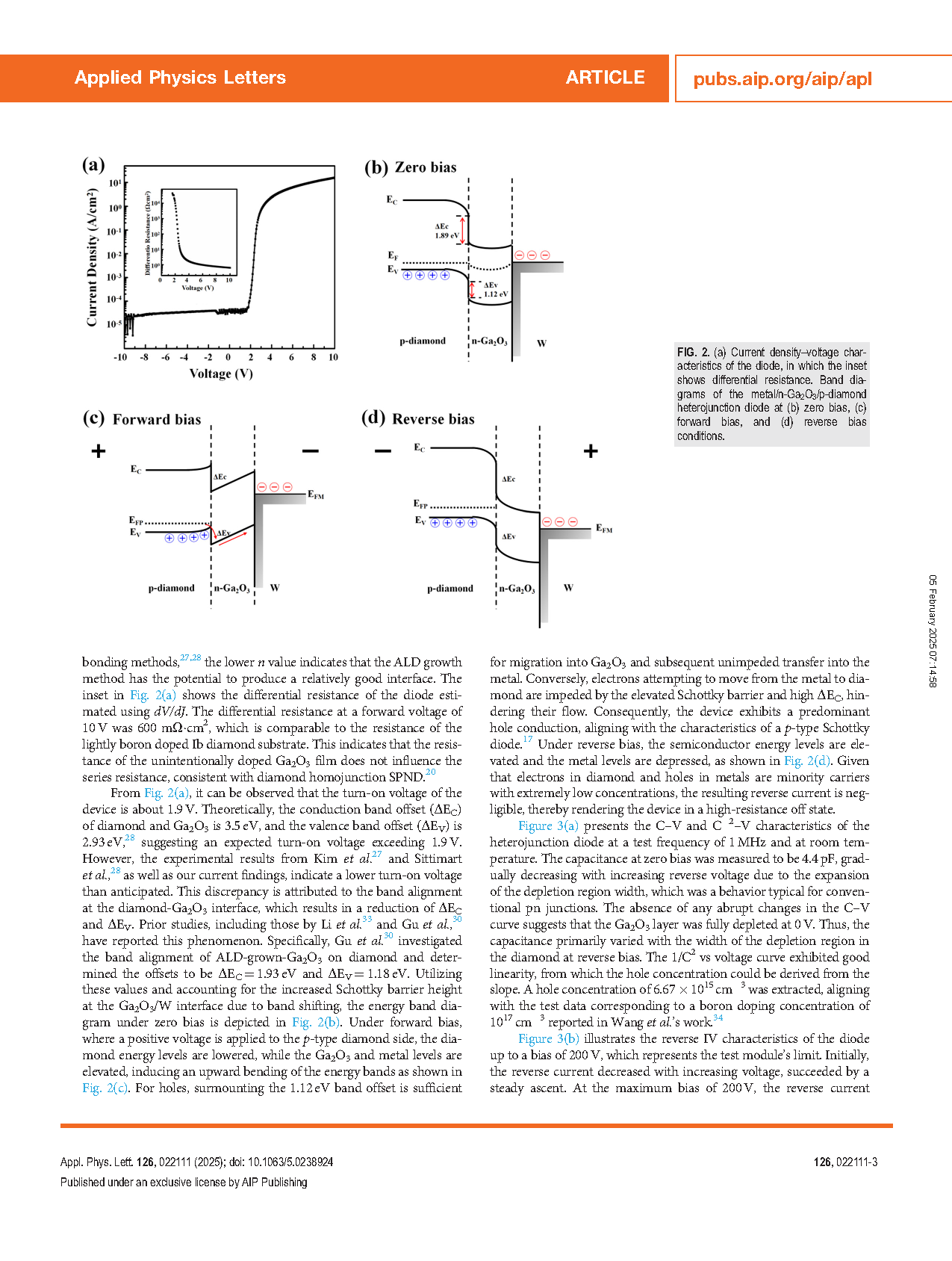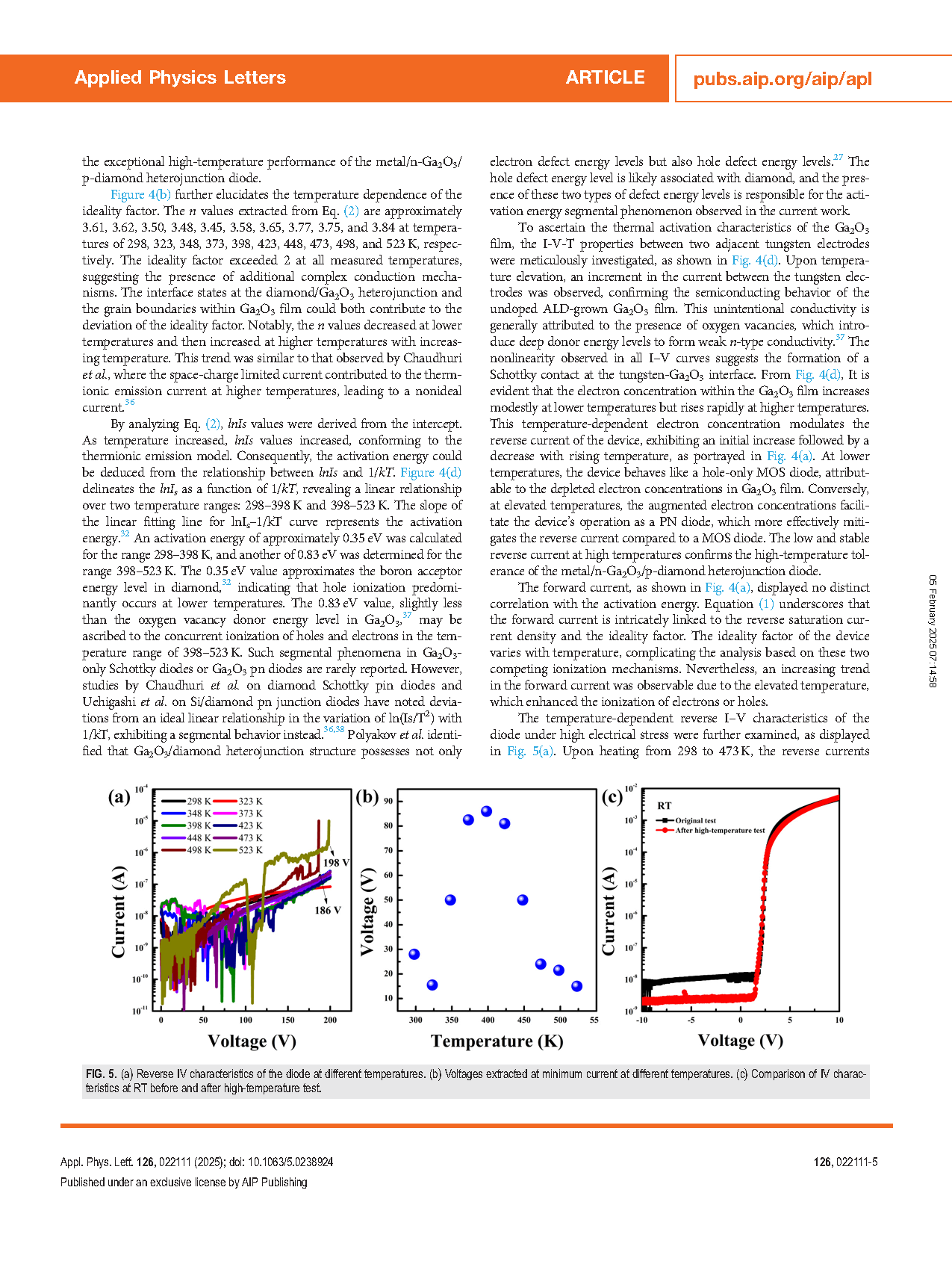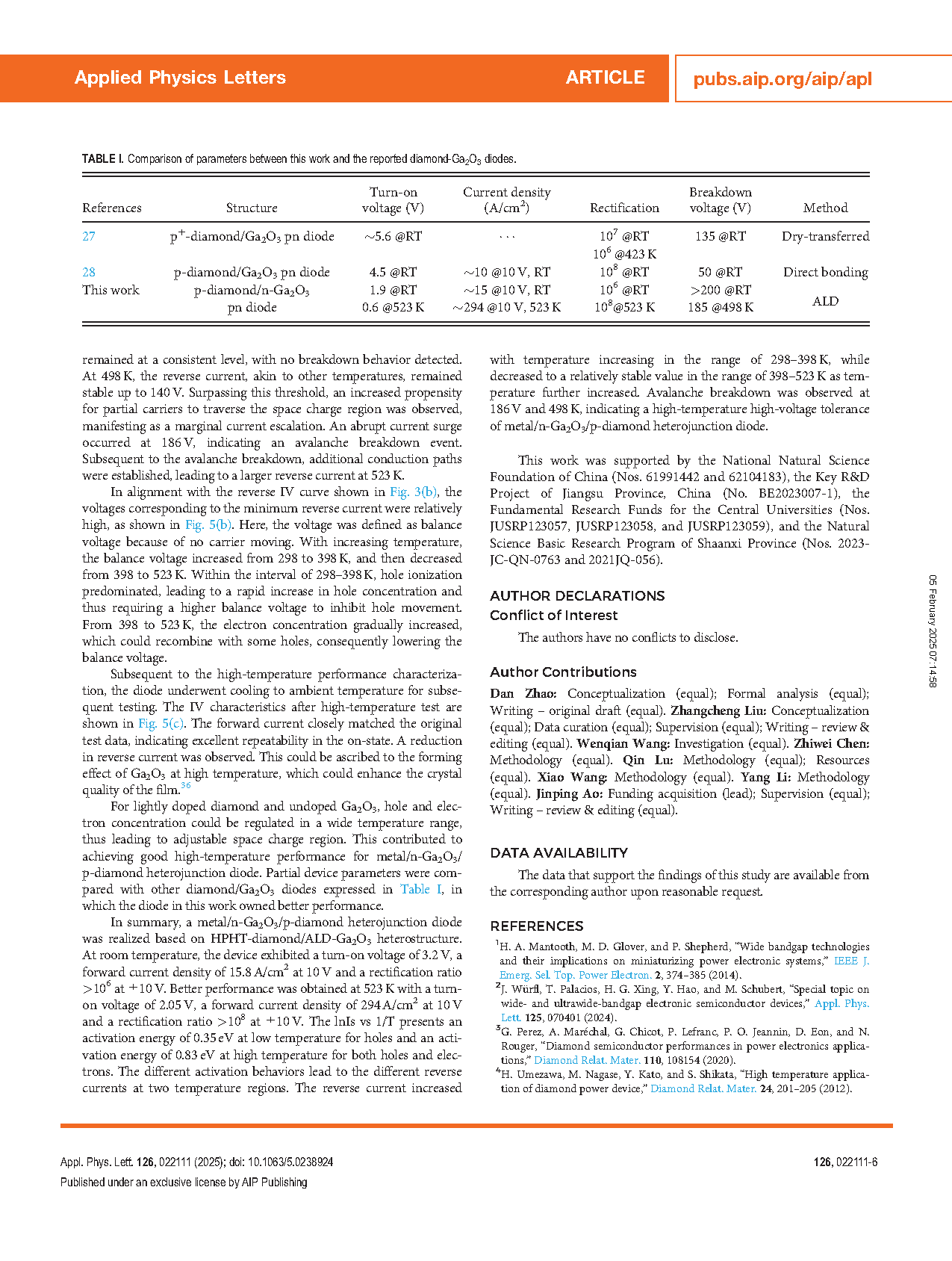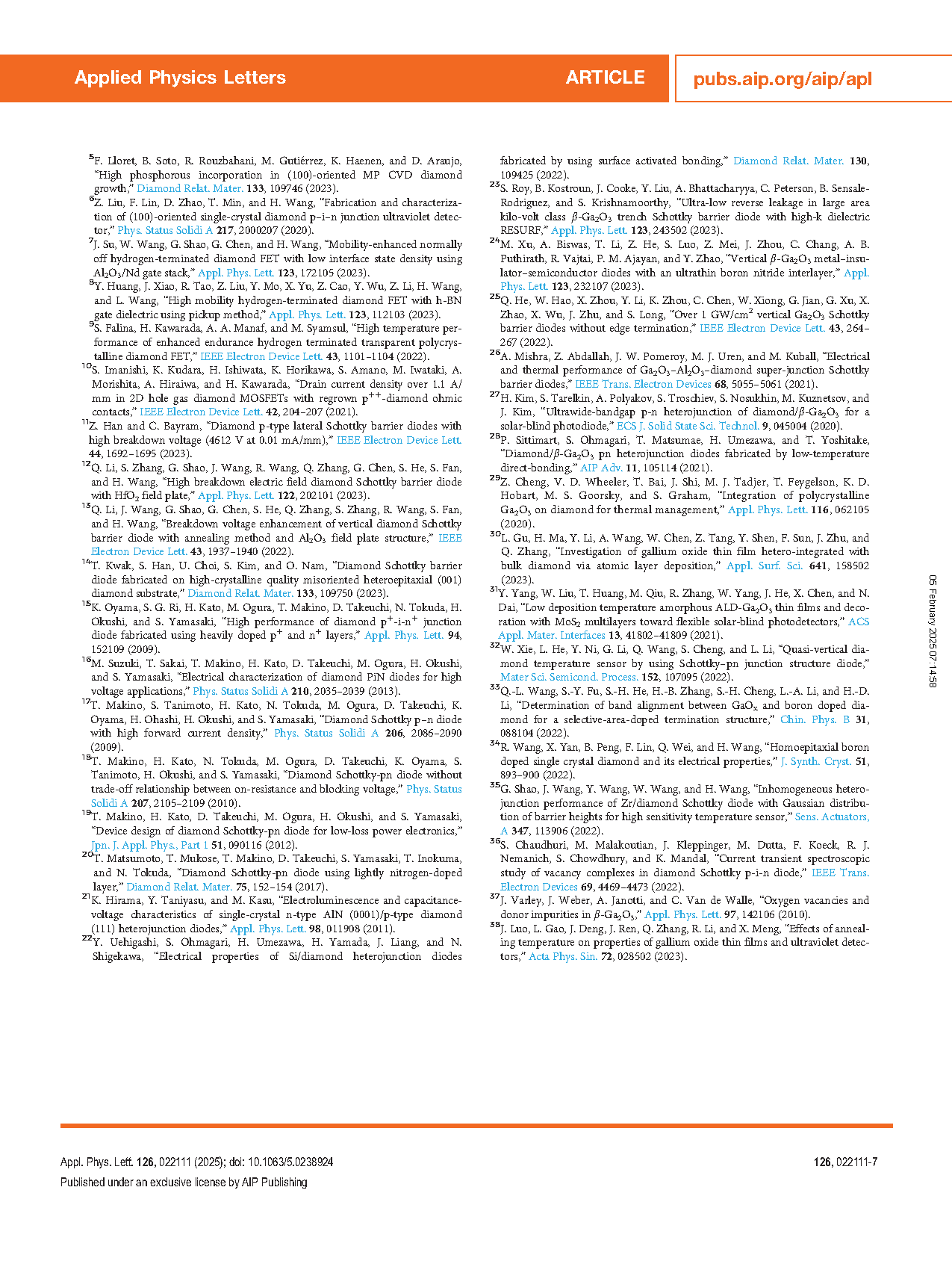
【Domestic Papers】BYD Semiconductor's New Advances in Gallium Oxide Research——Exploring New Areas of Device Applications
日期:2025-02-13阅读:475
Researchers from the BYD Semiconductor Company Limited have published a dissertation titled "High-temperature performance of metal/n-Ga2O3/p-diamond heterojunction diode fabricated by ALD method" in Applied Physics Letters.
This work was supported by the National Natural Science Foundation of China (Nos. 61991442 and 62104183), the Key R&D Project of Jiangsu Province, China (No. BE2023007-1), the Fundamental Research Funds for the Central Universities (Nos. JUSRP123057, JUSRP123058, and JUSRP123059), and the Natural Science Basic Research Program of Shaanxi Province (Nos. 2023- JC-QN-0763 and 2021JQ-056).
Abstract
A metal/n-Ga2O3/p-diamond heterojunction diode with superior high-temperature performance was demonstrated in this work. The p-type diamond was lightly boron doped, and the Ga2O3 film was grown via atomic layer deposition without intentional doping. The forward current density increased with temperature, while the reverse current decreased at elevated temperatures. This behavior was attributed to the distinct carrier ionization dynamics across varying temperature ranges. Under high reverse voltage stress, the reverse current remained relatively stable, with no breakdown occurring up to 498 K. An avalanche breakdown voltage of 186 V at 498 K indicates the diode's robust high-voltage endurance capability. These findings underscore the potential of the metal/n-Ga2O3/p-diamond heterojunction diode for high-temperature and high-voltage applications.
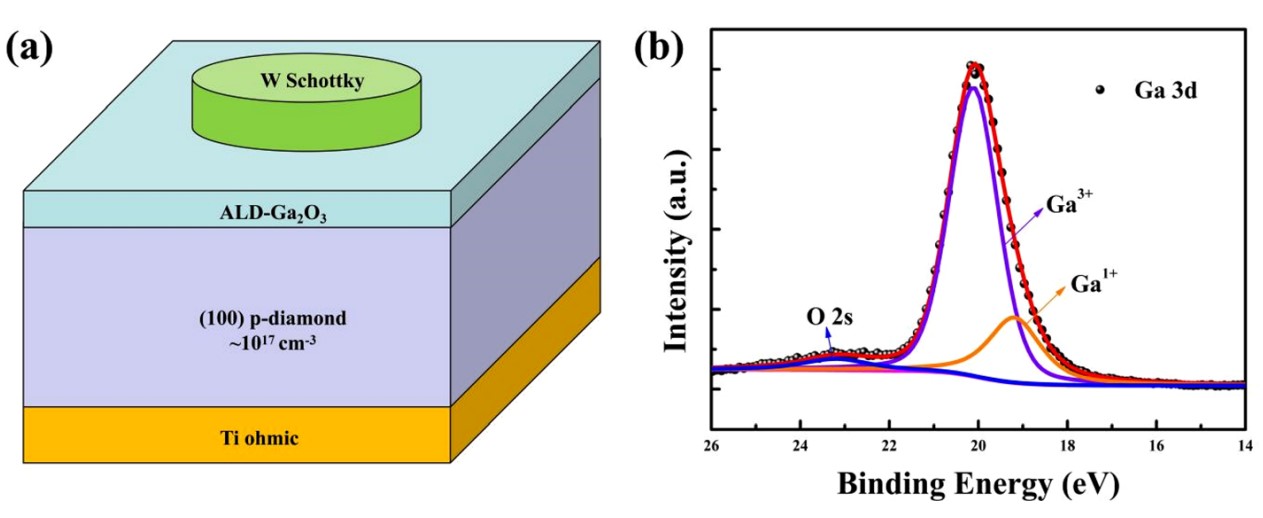
FIG. 1. (a) Schematic structure of metal/ n-Ga2O3/p-diamond heterojunction diode. (b) XPS spectrum of Ga 3d in Ga2O3 film.
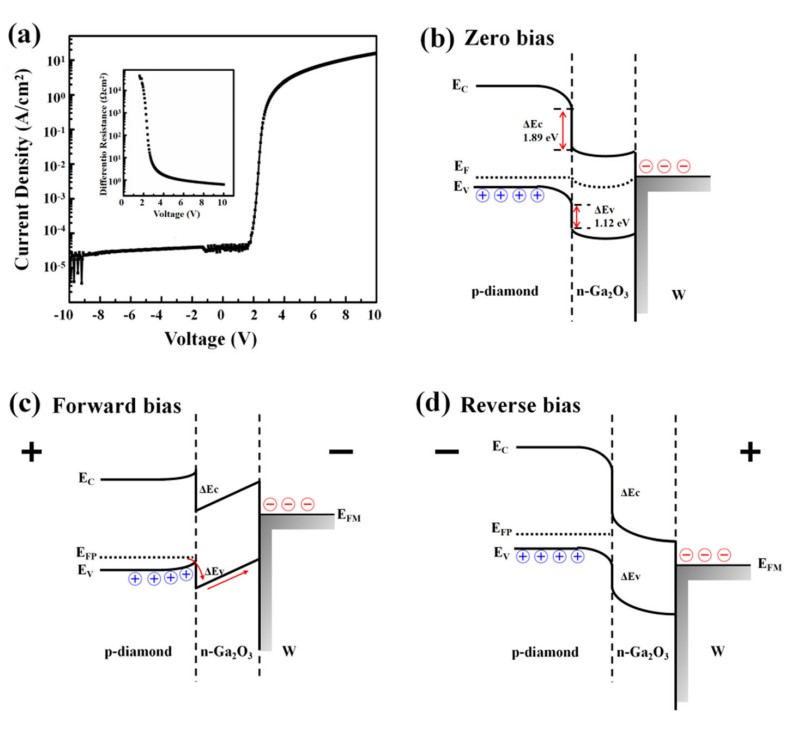
FIG. 2. (a) Current density–voltage characteristics of the diode, in which the inset shows differential resistance. Band diagrams of the metal/n-Ga2O3/p-diamond heterojunction diode at (b) zero bias, (c) forward bias, and (d) reverse bias conditions.
DOI:
doi.org/10.1063/5.0238924
